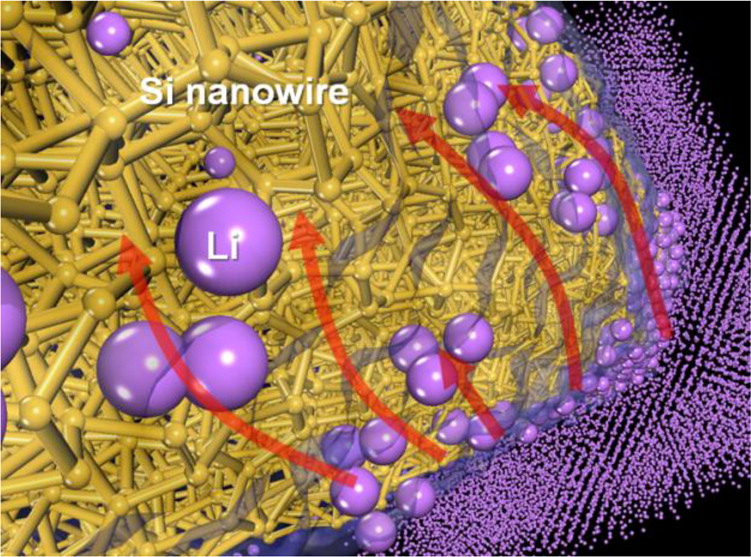Atomistic Observation of the Lithiation and Delithiation Beahviors of Silicon Nanowires using Reactive Molecular Dynamics Simulation
슈퍼관리자
2021-05-21
Atomistic Observation of the Lithiation and Delithiation Beahviors of Silicon Nanowires using Reactive Molecular Dynamics Simulation
-
Authors :
Hyun Jung, Minho Lee, Byung Chul Yeo, Kwang-Ryeol Lee, Sang Soo Han
-
Journal :
J. Phys. Chem. C
-
Vol :
119
-
Page :
3447-3455
-
Year :
2015

Abstract
AbstractFor the practical use of silicon nanowires (Si NWs) as anodes for Li-ion batteries, understanding their lithiation and delithiation mechanisms at the atomic level is of critical importance. Here, we report the mechanisms for the lithiation and delithiation of Si NWs determined using a large-scale molecular dynamics (MD) simulation with a reactive force field (ReaxFF). The ReaxFF is developed in this work using first-principles calculations. Our ReaxFF-MD simulation shows that an anisotropic volume expansion behavior of Si NWs during lithiation is dependent on the surface structures of the Si NWs; however, the volumes of the fully lithiated Si NWs are almost identical irrespective of the surface structures. During the lithiation process, Li atoms penetrate into the lattices of the crystalline Si (c-Si) NWs preferentially along the ⟨110⟩ or ⟨112⟩ direction, and then the c-Si changes into amorphous LixSi (a-LixSi) phases due to the simultaneous breaking of Si–Si bonds as a result of the tensile stresses between Si atoms. Before the complete amorphization of the Si NWs, we observe the formation of silicene-like structures in the NWs that are eventually broken into low-coordinated components, such as dumbbells and isolated atoms. However, during delithiation of the LixSi NWs, we observe the formation of a small amount of c-Si nuclei in the a-LixSi matrix below a composition of Li1.4Si ≈ Li1.5Si, in which the volume fraction of formed c-Si phases relies on the delithiation rate. We also demonstrate that the two-phase structure can be thermodynamically more favorable than the single-phase a-LixSi. We expect that our comprehensive understanding of the lithiation and delithiation mechanisms along with the developed ReaxFF for Li–Si systems will provide helpful guidelines in designing Si anodes to obtain better performing Li-ion batteries.
















